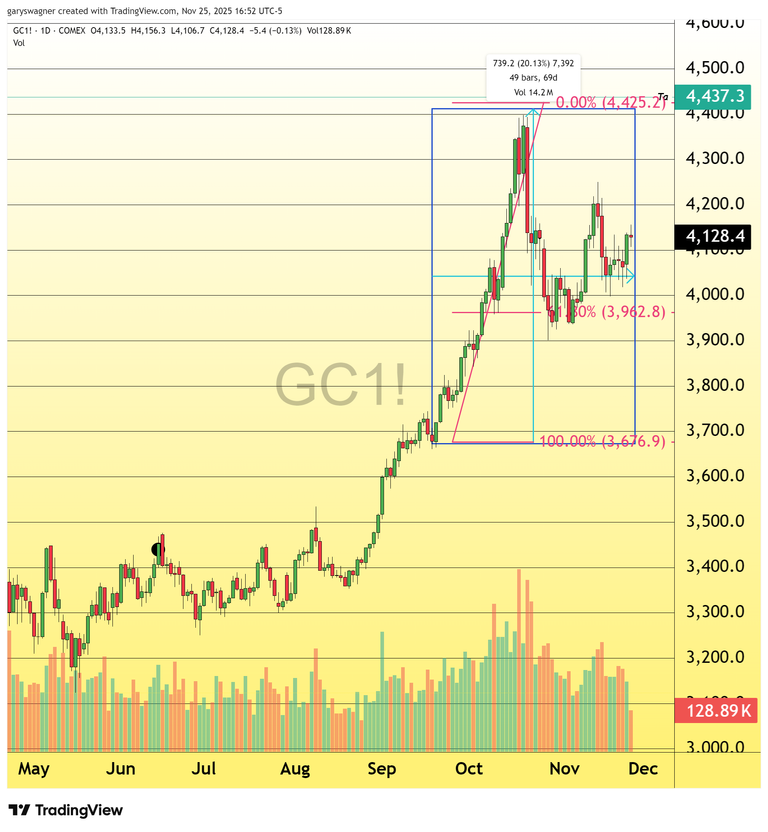Gold prices held relatively flat on Tuesday despite a decline in the U.S. dollar, as markets digested mixed economic data and continued to focus on dovish commentary from Federal Reserve officials regarding future monetary policy.
The economic data released Tuesday presented a softer picture of the U.S. economy. September retail sales figures came in below analyst expectations, while the Producer Price Index showed a 2.7% year-over-year increase through September. However, these reports took a backseat to renewed attention on statements from Federal Reserve policymakers that reinforced expectations for additional rate cuts.
Fed Governor Stephen Miran stated on Tuesday that deteriorating labor market conditions warrant further rate reductions, comments that echoed similarly dovish remarks made by Fed Governor Christopher Waller on Monday. The cumulative effect of these statements has been a notable increase in market expectations for monetary easing. According to the CME Group's FedWatch tool, the probability of a third rate cut this year has now climbed to 85%, reflecting growing confidence that the Federal Reserve will continue its accommodative policy stance.
The heightened rate cut expectations finally translated into weakness in the U.S. dollar. The dollar index declined by one-third of a percent, or 0.33%, falling back below the psychologically significant 100 level to trade at 99.84. Typically, dollar weakness would be expected to provide support for gold prices, as the precious metal becomes more attractive to holders of other currencies.
However, despite the notable decline in the dollar, gold futures edged lower by $4.50, or 0.11%, settling at $4,129.30 per ounce. Silver futures also experienced a modest pullback, declining $0.12, or 0.24%, to trade at $51.07. The muted response in precious metals despite dollar weakness may reflect profit-taking after recent gains or uncertainty ahead of additional economic data releases.

From a technical perspective, both gold and silver continue to exhibit bullish characteristics. Both precious metals are trading above their major moving averages, including their 50-day and 20-day simple moving averages, which technical analysts typically view as indicators of upward momentum. The current price action suggests both metals are positioned to potentially test their all-time highs, which stand approximately 6% above current price levels in both markets. Sudden moves could be seen in these markets as low trading volume around the holidays begins.
For those who would like more information about our services click here.
Wishing you as always good trading,


